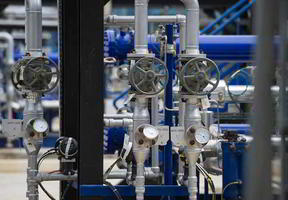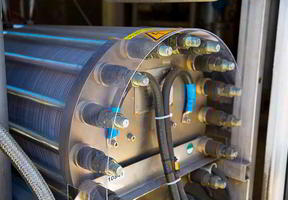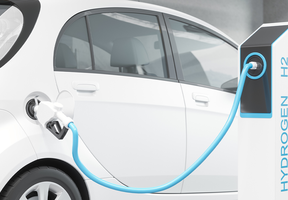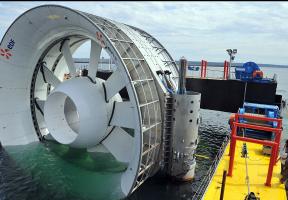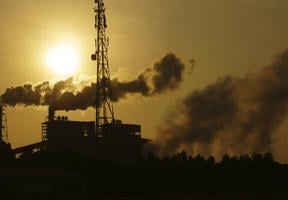Fuels in Aviation and Shipping
5 min read
The aviation industry represents 7.8% of final oil consumption worldwide, while maritime shipping accounts for 6.7%. Consumption by the aviation industry is growing the most rapidly – in fact, up until the early 1980s, it was responsible for less energy use than shipping. Both figures pale in comparison to road transportation (passenger cars and freight vehicles), which represents 49.3% of global final consumption1.

© - The latest generation aircraft consume 70% less kerosene than those of the 1960s.
Types of Fuel in Aviation
Kerosene
Kerosene, known as Jet A-1 in the aviation industry, is derived from refined and used in jet planes, large aircraft with propellers and turboprop engines, and certain helicopters. Lighter than but heavier than gasoline, kerosene is useful in aviation because it is resistant to cold at high altitudes (Jet A-1 has a freezing point of -47°C).
Aviation Gasoline
Aviation gasoline, or avgas, is a blue-colored used for light aircraft. In 2016, 300 million metric tons of Jet A-1 were delivered worldwide, compared to just 1 million of avgas. Since 2010, biofuels have been mixed with fossil fuels, but in very controlled proportions (usually very low).
Types of Fuel in Maritime Shipping
- Bunker fuel, which is essentially made up of , is a refined product used in large merchant ships such as tankers, container ships, ferries and bulk carriers.
- Fishing fuel is a high-quality fuel oil used, as its named suggests, by fishing professionals to their boats.
- Marine distillate fuel (DMA) is an international benchmark in diesel used for recreational boats.
- Unleaded 98 blue gasoline is aimed at boats with gasoline engines.
Rising Consumption
Globalization and the opening of economies in Asia, particularly China, have considerably intensified air and maritime travel2. Buoyed by more readily affordable prices from low-cost airlines, the number of air passengers surpassed 4 billion in 2017 (3 billion in 2013) and could reach 6.7 billion by 2032.
Merchant shipping covers 90% of global trade, with tonnage increasing by 4% every year and around 90,000 vessels of all shapes and sizes criss-crossing the seven seas.
As a result, maritime and air transportation are now each responsible for between 2% and 3% of greenhouse gas emissions3. In addition, the fuel oil used to power ships generates more sulfur and particulate matter than road fuels.
It is difficult to predict how air and maritime traffic will develop in the long term. Challenges to globalization, the limited availability of fuel and restrictions on building new infrastructure such as airports mean that progress cannot continue indefinitely. In addition, a number of factors may point to a significant slowdown in fuel consumption4.
Solutions to Reduce Consumption
Aviation
The most efficient ways to reduce fuel consumption in aviation are by making airplanes lighter and improving engine performance. Latest-generation aircraft consume 70% less fuel than those from the 1960s. Flight could also be managed better to cut down on waiting times before landing, and electric engines could be used for taxiing. Through these measures, it should be possible to halve the increase in consumption forecast for 2040.
In addition, oil companies have developed biokerosene from , which could replace around 10% of kerosene from fossil fuels without the engine having to be modified. Since 2011, several thousand commercial flights have been partially powered by biofuels. However, in terms of volume, this is not likely to constitute a wholly viable alternative in the next few decades.
Maritime Shipping
Measures such as improving propulsion engines, lowering speeds, better controlling navigation parameters and connecting moored ships to an supply so as not to use fuel for their onboard services could reduce increases in consumption from growth in traffic by around 60%.
Governments have already put in place regulations to replace heavy fuel oil with fuels that emit fewer sulfur compounds, such as diesel, which involves adapting engines. These are initially being implemented in ports and straits that are frequently used and near populated areas.
Another key change is switching to , which could reduce consumption by a further 20%. The challenge is how to set up a worldwide supply chain of LNG. Ships can, of course, fill up from a terminal at the shore, or have their LNG supplied by an tanker or by a tank truck in a conventional port.
In 2017, there were only around 60 ships operating on gas. But the growth prospects are significant, particularly for the 300 giant container ships, whose number is set to rise. These vessels consume a lot of fuel and emit a great deal of pollution, so switching to LNG would be a clear advantage.
The use of sails to support fuel oil engines is also being tested on a more limited basis.
Several countries and many environmental organizations are calling for an end to the tax exemptions granted to the aviation industry for kerosene and the maritime industry for fuel oil. However, for international journeys at least, this demand is at odds with the history of the tax breaks, which often stem from international agreements made after the Second World War to boost trade.
- Oil is also used in petrochemicals, housing, industry and electricity production.
- A number of Internet resources provide spectacular images of these trips in real time – for example, MarineTraffic for ships and FlightAware for airplanes.
- The International Civil Aviation Organization has published a calculator to measure the emissions from each air trip. See here
- See the report by the Total Group


